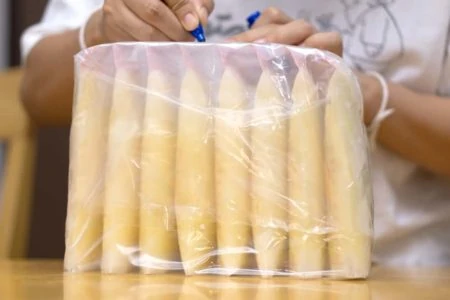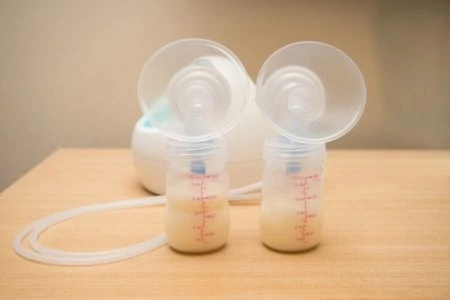Has breastfeeding suddenly turned into a painful ordeal? Does one of your breasts feel hot, heavy, and tender to the touch?
You aren’t alone, and you aren’t imagining the pain. You likely have a common breast infection known as mastitis.
Mastitis refers to the inflammation of breast tissue that may involve an infection. It affects many breastfeeding moms, yet the sudden onset of flu-like symptoms and breast pain can still catch you off guard.
We know how hard it is to care for a baby when you feel like staying in bed. We consulted medical guidelines to bring you the most up-to-date advice on causes, symptoms, and the new protocols for relief (hint: it involves more ice than heat). Here is how to tackle mastitis and get back to comfortable nursing.
Key Takeaways
- What it is: Mastitis is inflammation of the breast tissue, often involving an infection, caused by narrowing ducts or bacterial entry.
- The signs: Look for a wedge-shaped red area, heat, swelling, and flu-like symptoms such as fever or chills.
- New treatment protocols: Modern medical advice emphasizes ice, NSAIDs (ibuprofen), and rest rather than aggressive massage or excessive heat.
- Prevention: Manage oversupply, ensure a comfortable latch, and avoid restrictive clothing that puts pressure on the breast.
Why Does Mastitis Happen?
While mastitis can technically affect anyone, it is most frequently seen in lactating mothers during the first few months of breastfeeding.
Your breasts contain a complex network of ducts that carry milk to the nipple. Sometimes, the tissue surrounding these ducts becomes inflamed. This narrowing restricts milk flow and causes swelling. This inflammation is often referred to as “ductal narrowing” rather than a physical “plug” of milk.
Several factors contribute to this inflammation and potential infection (1):
- Hyperlactation (Oversupply): Producing more milk than your baby needs can lead to engorgement, which triggers inflammation in the breast tissue.
- Microbiome imbalance: A disruption in the natural bacterial balance of the breast milk can lead to infection (bacterial mastitis).
- Nipple injury: Cracks or fissures in the nipple provide an entry point for bacteria from the skin or baby’s mouth.
- External pressure: Tight clothing, seatbelts, or ill-fitting bras can compress tissue and restrict lymphatic drainage.
Is It a Clogged Duct or Infection?
You might hear the terms “clogged duct” and “mastitis” used interchangeably, but there is a progression. A “clogged duct” is essentially localized inflammation. You might feel a small, tender lump or notice a specific area is sensitive.
Mastitis occurs when that inflammation spreads or becomes infected. While a clogged duct feels like a sore spot, mastitis feels like a full-body event. If you treat the initial inflammation early with ice and rest, you can often prevent it from escalating into full-blown bacterial mastitis.
Spotting the Symptoms
When inflammation progresses to mastitis, the symptoms hit hard and fast. It is often described as feeling like the flu, but localized in the chest.
Watch for these primary indicators (2):
- Hardness: The breast tissue swells and feels firm or hard, often in a wedge shape.
- Discoloration: You may see pink or red streaks on light skin. On darker skin tones, the area may appear darker or bruised.
- Radiating Heat: The skin on the affected breast often feels hot to the touch compared to the other breast.
- Systemic Illness: This is the big differentiator. Mastitis usually brings a fever of 101 degrees Fahrenheit or higher, chills, body aches, and fatigue.
Doctors generally diagnose mastitis based on these physical symptoms. If you spike a fever or notice red streaks spreading, call your physician immediately.
Medical Note
How to Treat Mastitis
If your symptoms are severe or persist beyond 24 hours, your doctor will likely prescribe antibiotics to kill the bacteria. It is crucial to finish the entire course of medication even if you start feeling better.
However, managing the pain and inflammation at home is just as important. Note: Medical protocols have changed recently. The old advice of “heat and aggressive massage” is now considered outdated because it can increase inflammation (3).
Here is the updated way to soothe mastitis at home:
1. Ice and Cold Therapy
Since mastitis is inflammation, you want to cool it down, not heat it up. Apply ice packs or cold compresses to the affected area for 10 to 20 minutes between feeds. This reduces swelling and numbs the pain.
Limit heat. While a warm shower feels nice, excessive heat can dilate blood vessels and actually increase swelling in the breast tissue.
2. Use NSAIDs
Over-the-counter anti-inflammatories are your best friend here. Medications like ibuprofen (Advil or Motrin) help reduce the swelling of the breast tissue, which helps open the ducts back up.
Acetaminophen (Tylenol) can help with pain and fever, but ibuprofen specifically targets the inflammation causing the blockage.
3. Gentle Lymphatic Drainage
Stop the deep tissue massage. Aggressively kneading a lump can damage the delicate milk-making cells and cause bruising.
Instead, use “feather-light” touches. Gently stroke the skin of your breast moving from the nipple back toward your armpit. This helps move the lymphatic fluid and reduces swelling.
4. Rest and Hydration
Your body is fighting an infection. You need to rest as much as possible. This is the time to call in favors, have a partner handle diaper changes, and stay in bed with your baby.
Drink plenty of water to flush your system. Electrolyte drinks or bone broth are great additions to keep your energy up.
Hot Tip
5. Breastfeed “On Demand”
Continue to feed your baby, but do not “pump to empty” or try to drain the breast completely if it hurts. Over-draining can signal your body to produce even more milk, which fuels the fire.
Feed your baby when they are hungry. If nursing is too painful on the affected side, it is okay to pump gently just to relieve pressure, but aim for comfort rather than an empty bottle. If you need help with positioning, a lactation consultant can be a lifesaver.
If you are exclusively pumping, stick to your normal schedule. Do not ramp up the suction power; keep it gentle to avoid nipple trauma.
How Long Does It Last?
With antibiotics and proper rest, many women feel relief within 24 to 48 hours. The tenderness and lumpiness may take a week or so to fully resolve.
If you do not see improvement after two days of antibiotics, or if the redness spreads, contact your doctor again. You may need a different medication or further evaluation.
Is It Safe to Breastfeed?
Yes, it is completely safe to breastfeed with mastitis. The bacteria involved are usually already present in the baby’s mouth or on your skin, so you aren’t introducing anything new to them.
The infection is in the breast tissue, not necessarily the milk itself.
Taste Changes
Pumping With Mastitis
In some cases, the pain of a baby latching is just too much. If you need to switch to pumping temporarily, follow these tips to keep it bearable:
- Pre-medicate: Take your ibuprofen about 30 minutes before a pumping session to help with pain and let-down.
- Lower the suction: High suction does not equal more milk. Use the lowest effective setting on your breast pump. High suction can swell the nipple tunnel and block flow further.
- Hand express: If the pump feels like torture, try hand expressing into a wide-mouth container or a Haakaa. It allows you to control the pressure and avoid touching the most tender spots.
What If the Lump Doesn’t Go Away?
Most mastitis lumps dissolve as the inflammation goes down. However, if you finish your treatment and a distinct lump remains, or if the redness persists without pain, see your doctor.
While mastitis does not cause breast cancer, inflammatory breast cancer can sometimes mimic mastitis symptoms. A persistent lump always warrants a physical exam or an ultrasound just to be safe (4).
Preventing Future Flare-Ups
Once you have had mastitis, you will want to do everything possible to avoid a sequel. Here is how to keep things flowing smoothly.
1. Fix the Latch
A shallow latch prevents the breast from draining efficiently and can cause nipple damage, a double whammy for mastitis risk. When your baby latches, their mouth should cover a large portion of the areola, with lips flanged outward.
If breastfeeding hurts or your nipples look pinched (like a new tube of lipstick) after a feed, reach out to a professional.
2. Manage Your Schedule
Sudden changes in feeding frequency can trigger a blockage. If your baby suddenly sleeps through the night (hooray!), you might wake up engorged. You may need to hand express just enough to relieve pressure for a few nights until your supply regulates.
For working moms, try to pump at the same times your baby would be eating. If you miss a session, you risk backing up the system.
3. Avoid Oversupply
We often worry about not making enough milk, but making too much is a primary cause of mastitis. If you have a massive oversupply, try not to pump your breasts “completely empty” after every feed. This tells your body to make even more.
Aim to remove just enough milk to soften the breast. Block feeding (nursing from only one side per feed) can also help down-regulate supply, but do this under the guidance of a lactation consultant.
Give Back
Mastitis and Breastfeeding FAQs
Recovery Is Possible
Mastitis feels overwhelming when you are in the thick of it, but it is highly treatable. Listen to your body, prioritize rest, and do not hesitate to call your doctor if a fever spikes.
Remember to use ice for inflammation and keep your milk moving, even if it is just a little bit at a time. You are doing a great job, and this painful phase will pass.











